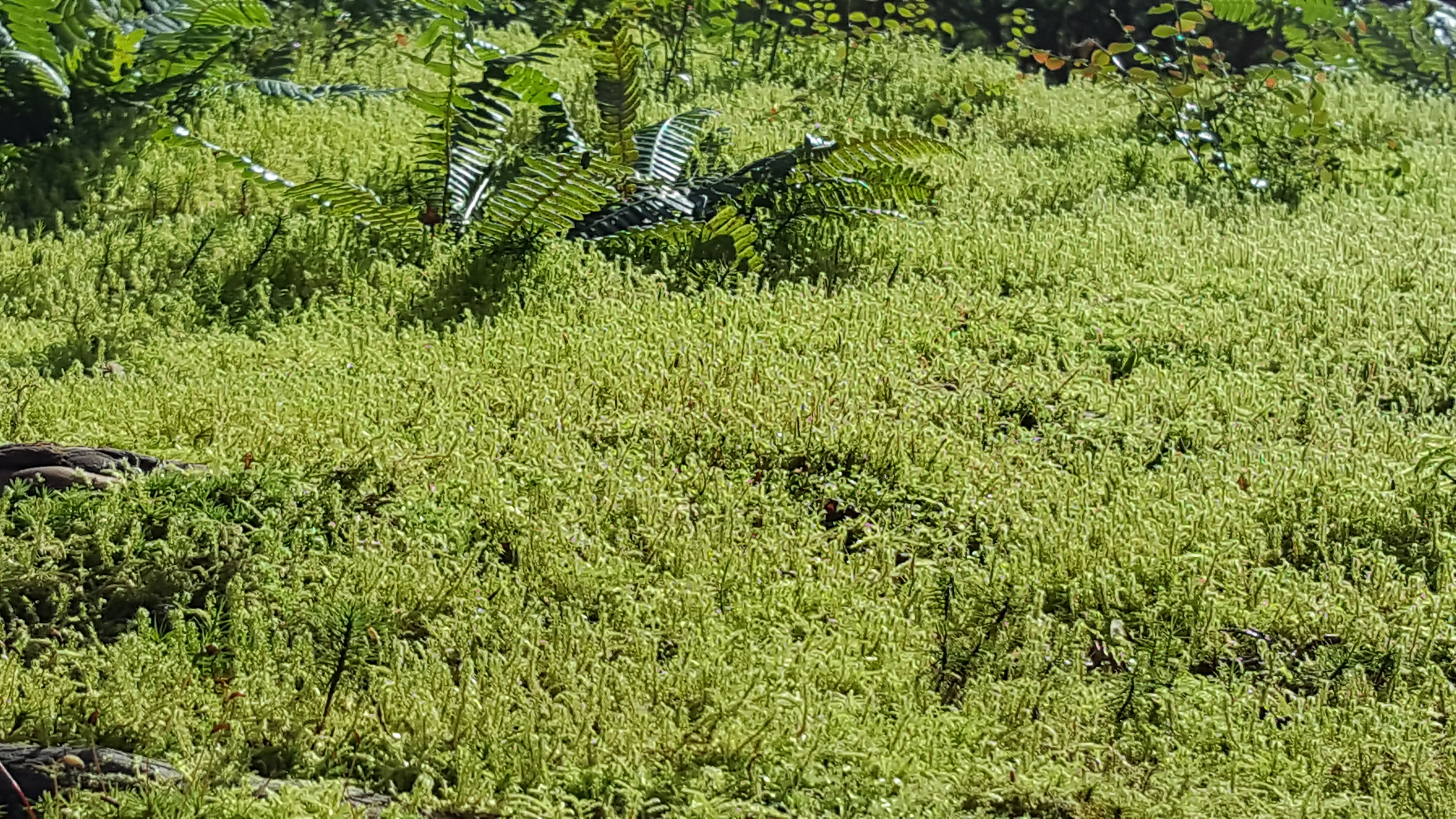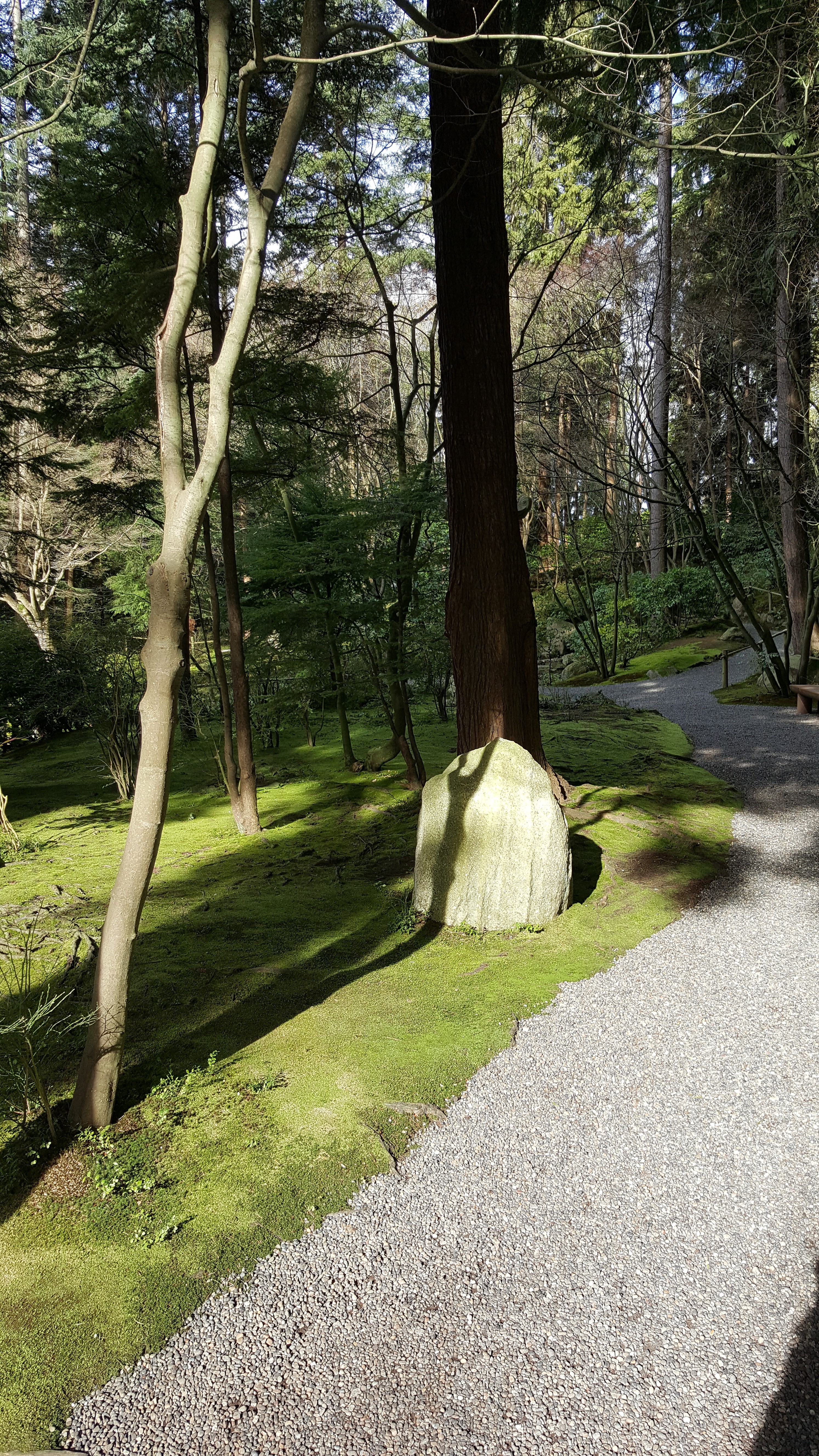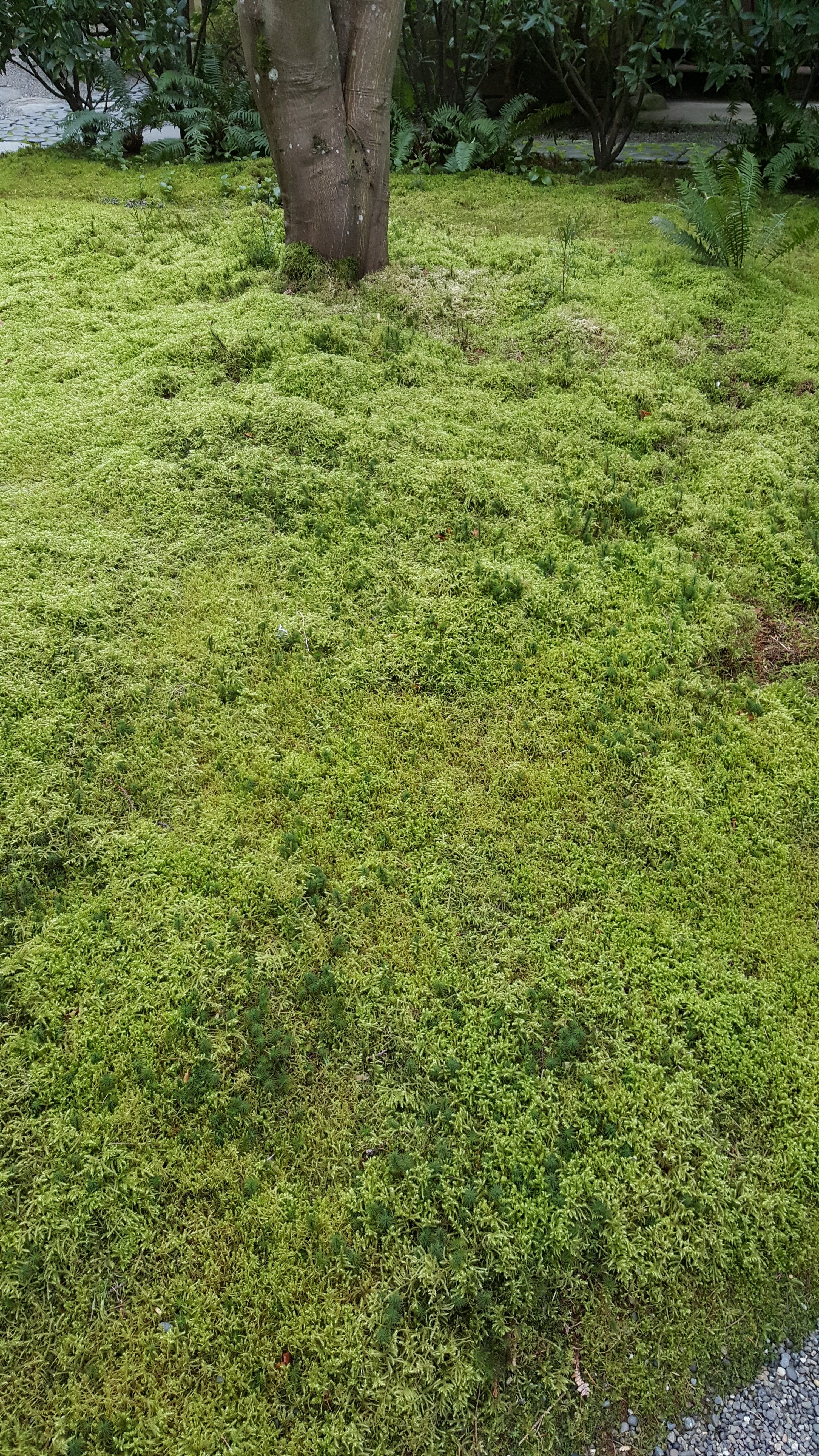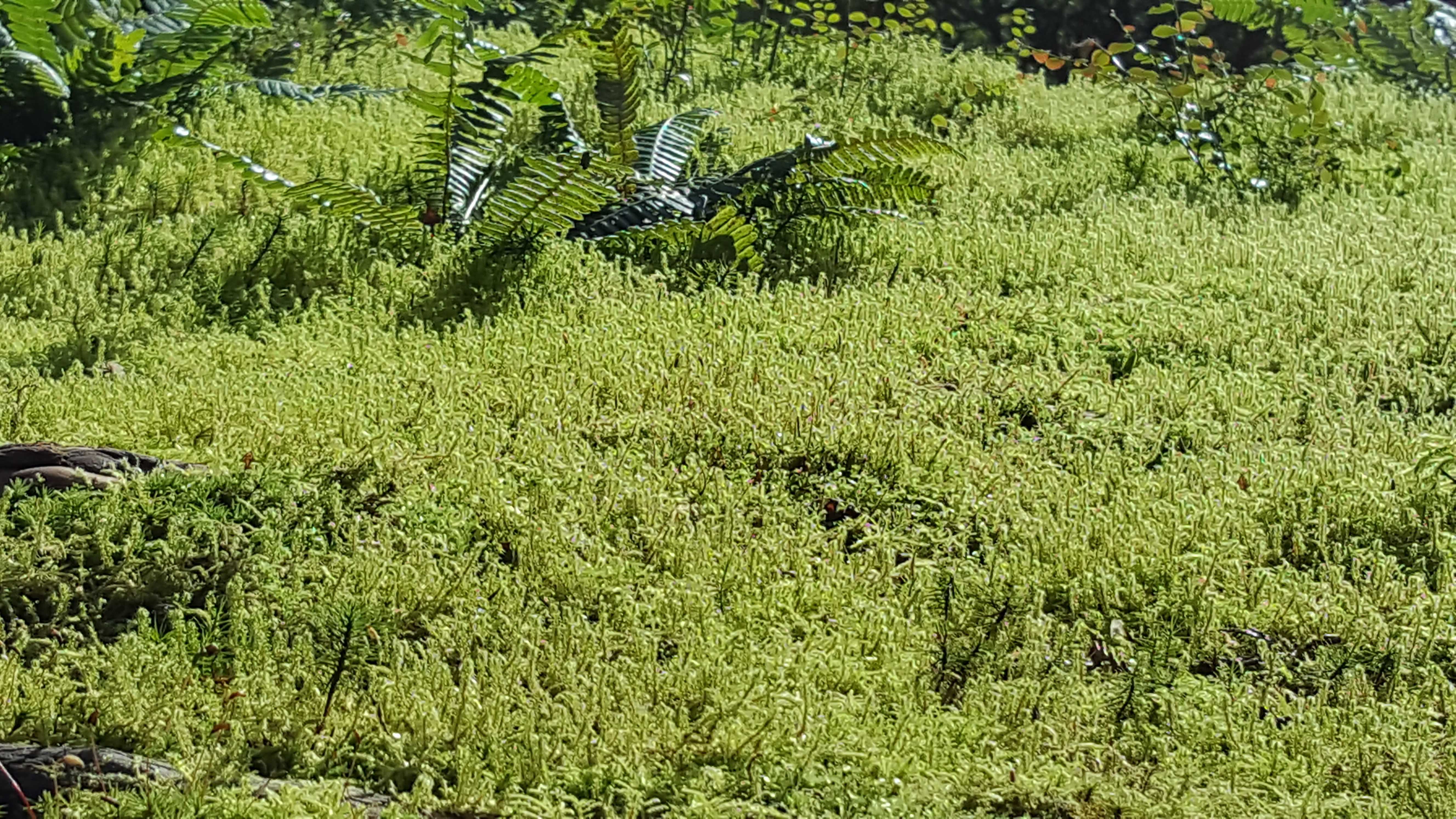
In Japanese aesthetics, imperfection, impermanence, and incompleteness are defined to express the beauty of arts. Wabi–sabi (侘寂) is the term that is used in Japanese to describe all these aspects and it consists of many characteristics. The use of moss in a Japanese garden represents one of the characteristics of wabi-sabi, that of “simplicity.” With sufficient humidity, moss is a plant that is easy to grow, especially in Vancouver where we have plenty of rain. There are several reasons why Japanese gardens tend to use moss instead of grass. First, moss grows fairly slowly. The slow growth of moss symbolizes longevity, an elements of Japanese aesthetics. In contrast, grass usually grows quickly. The swift growth of grass may make the garden appear more aggressive and less calm. Second, there are numerous types of moss. Different types of moss offer different colors and shapes and can thus be used to create various styles of scenery. Last but not least, moss is very fragile. Japanese gardens provide a different feeling from gardens in the West. On a sunny weekend, you might find Western people using gardens to barbecue, play frisbee, or tan as a site for enjoyment and play. In contrast, Japanese gardens do not invite such activities but instead engender tranquility, calm, and peace. Therefore, the physical fragility of the moss, which must be treated more carefully, gives a mood of peacefulness. This vibrant green plant connects everything to nature and hence becomes one of the most important elements in Japanese gardens.


Plants, rock, sand, water are essential features of the Japanese garden. Plants are carefully arranged around the Nitobe gardens to imitate nature. There are many plants in the garden, but moss is one of the signature plants. In Japan, moss is regarded as an essential element, which has been used in Japanese gardens for centuries. Moss represents islands in the Japanese gardens, It provide a very neat and tailored look, and are deep shades of green. You can see large areas in Nitobe garden covered with moss, it grows on stone lanterns, side roads, and garden stones. The stone steppers among the moss are designed to allow passage without damage to the cushiony surface.
Vancouver is not a perfect place for growing moss, Vancouver is too dry, which couldn’t provides a humid climate in all seasons. Although Vancouver has a long rain season, rain isn’t actually necessary for moss to thrive. More important than the average annual rainfall is the air humidity. And even without rain, moss can also survive periods of drought.
According to the presentation by Sugiyama, he says Japanese people like imperfection in nature and Arts. The imperfection form is referred as “Wabi-Sabi”, it plays an important role in moss popularity. Mosses grow seemingly at random and in asymmetrical patterns, it shows the perfect in imperfection. Moss doesn’t grow dramatically overnight,it takes many years to grow and cover a stone. Such slow growing indicating a long aging process, which make Japanese people see the beauty inherently.
References
“Real Japanese Gardens.” Moss in the Japanese Garden. Web. 29,Feb. 2016. <http://www.japanesegardens.jp/plants/000112.php>.
Sugiyama, Ryo. “Nitobe Garden.” Lecture, University of British Columbia, Vancouver, BC, September 24, 2016.
“What’s behind Japan’s Moss Obsession?” The Conversation. Web.29,Feb. 2016. <http://theconversation.com/whats-behind-japans-moss-obsession-50500>.
